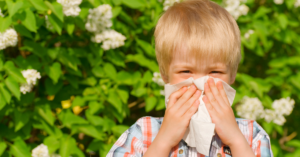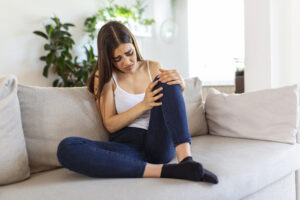Avoid school germs with 5 best practice tips from a doctor.
While many parents may look forward to their kids returning to school and getting back into a routine, many kids pick up more than just new friends from the school yard.
School sickness.
Nothing says school like picking up a new cold, flu or even a fresh crop of lice. At Your Doctors Online we want to prevent sickness before it happens. Our Chief Medical Advisor, Dr. Richard Honaker, shares his best tips to avoid germs in the classroom.
Tip to Avoid Back to School Germs #1: Pack Good Nutrition

One of the best ways to safeguard your kids against the viruses and bacteria that may be present in the classroom is to fill them full of healthy foods.
Choosing healthy options for breakfast can have a positive impact for the entire day. Eating breakfast has been linked to improved Eeatingnglish and math skills in children.
Children who skip breakfast may be lacking sufficient fiber, minerals, and vitamins including iron, zinc, calcium and B2.
Kids who eat breakfast are also more likely to eat healthier overall.
Your child’s ability to fight off illness and infection depends on their immune system. As the immune system is a complex system made up of many moving parts, there is not one single food that can be consumed to boost your child’s natural defenses.
Instead, choosing to pack healthier choices in your child’s lunch every day can keep their immune system working well.
Allowing your child to help pack their lunch and choosing healthy options that your child enjoys can help make this process easier.
If you are worried about your child’s nutrition, you can speak to one of our doctors about any growth concerns and whether your child would benefit from a multivitamin.
Related: The best foods to boost your immunity

Tip to Avoid Back to School Germs #2: Encourage Good Hand Washing

One of the best ways to prevent your child from bringing viruses and bacteria home is to practice good hand washing. While children may be familiar with the fact that they need to wash their hands after using the washroom, they may not be washing their hands long enough or thoroughly enough.
It is also important to remind children that door handles and the hot/cold handles can be very germ ridden. Using paper towels to create a barrier between these items and their hands can avoid a lot of unnecessary exposure. Although this can be difficult to teach a young child, modeling this behavior for your children can help them pick up these habits.
This is important for young children because germs from feces (poop) can cause germs like Salmonella, E. coli O157, and norovirus. When these germs enter the body you child may experience diarrhea or respiratory infections like adenovirus and hand-foot-mouth disease.
Children often touch their eyes, nose and mouth without even realizing it. These are easy ways for germs to enter their bodies.
Children also may not properly cover their mouths when they cough or sneeze. In a classroom setting where supplies and toys are often shared, germs can easily spread. Teaching your children to wash their hands often, especially before eating, can help safeguard them from germs.
Germs from unwashed hands can get on food that you consume. In certain conditions, germs on foods or beverages can even multiply and make you sick. Encouraging your children to wash their hands before eating at home can help this habit to transfer into the classroom.
Parents may want to send hand sanitizer with their child to school. Although not as beneficial as good handwashing habits, it is better than no protection for your children.
Read now: Preventing HPV and Cervical Cancer in Women
Tip to Avoid Back to School Germs #3: Don’t Share Head Wear

While many parents may fear the dreaded ‘L’ word during the summer months, lice can also happen in the fall. While most lice is spread by hair to hair contact, it can also be spread through the sharing of clothes, especially head wear.
Children in classrooms do tend to spend lots of time close together learning and playing. Since this is the primary way that lice spreads it is important to focus on prevention. Children should be taught to never share hats, brushes, combs or helmets.
Children with long hair benefit from having their hair tied back and/or braided to avoid hair to hair contact as much as possible. While some people may try natural deterrents such as tea tree oil, they are not proven to help prevent lice.
If you suspect that your child has lice, it is important to make sure that the treatment option you choose is safe to use. Never treat a child for lice who does not have lice with lice treatments. Not all treatments are safe for young children.
Tip to Avoid Back to School Germs #4: Sleep Right

Inadequate sleep has a direct impact on the immune system. Many studies have shown that those who lack quality sleep are more likely to become sick after being exposed to a virus. Poor sleep can also increase recovery time when you become sick.
The reason for this is because your immune system releases proteins called cytokines during sleep. Some of these cytokines actually promote sleep, but others are needed when you have an infection or inflammation in the body. When you are sleep deprived the production of these proteins is decreased. The production of infection-fighting antibodies is also reduced without adequate sleep.
How can you increase your child’s sleep?
Setting a good nighttime routine can be essential for children’s development and growth. Studies have demonstrated the importance of a consistent bedtime routine which includes reading with your children, a dark and quiet space for sleep, a consistent bedtime and a cool room to sleep in. When we suggest a cool room, we are not speaking to your decor choices, but rather the temperature in which your children sleep.
Warm air on your child at night can weaken their mucous membranes and make it easier for germs to enter. A humidifier and cooler temperatures can help avoid this problem.
As well as a consistent bedtime, it is also important to ensure your child is getting enough hours of sleep each night. The American Academy of Sleep Medicine recommends the following amounts of sleep, based on age group:
- 4 to 12 months =12 to 16 hours
- 1 to 2 years =11 to 14 hours
- 3 to 5 years =10 to 13 hours
- 6 to 12 years =9 to 12 hours
- 13 to 18 years =8 to 10 hours
Children who are not getting enough sleep have more problems at school and may develop slower than their peers who are getting adequate rest.
In a review of several sleep studies by the University of British Columbia it was determined that caffeine before bed, technology before bed and the lack of a good night time routine in general, such as sharing an evening meal, can have a negative impact on sleep.
To ensure your child is getting an adequate amount of sleep start setting a regular bedtime, establish a good evening routine and try to reduce technology before bed.
Related: Keep your kids healthier during the cold and flu season
Tip to Avoid Back to School Germs #5: Don’t Spread Germs

One of the hardest decisions for any parent each morning is to decide whether their child is too sick to go to school. Many parents waver between wanting to give their child adequate time to rest and recover from their illness and worrying about their child missing too much time from school.
Of course, there is also the concern that sending your child to school could cause another child to get sick. No parent wants to put another child at risk, but many may do that unknowingly.
Many germs are spread through the air when a child coughs or sneezes. While children may have these cough-like symptoms for an extended period, there are markers to know when you should keep your child home and when it is safe to send them to school.
When to Keep Your Child Home:
- If your child is experiencing aches, chills, or a fever.
- Digestive upset, such as diarrhea or vomiting
- Any undiagnosed rash
When to Send your Child to School:
- When they have been fever free for 24 hours
- 24 hours without vomiting or diarrhea
- Your child’s rash has been diagnosed and is not infectious
Get a Quick Answer Day or Night

No matter what health concerns your child is presenting, they never seem to happen during normal business hours. Get an easy answer by connecting with Your Doctors Online. Simply download our app and connect to a real north American doctor. You can reach us day or night with the touch of a button. Getting the advice of a doctor has never been easier.








